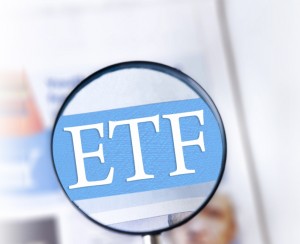Where should I invest? Mutual funds, UITF, VUL or stocks?
By Randell Tiongson on September 1st, 2015

Question: HI, I’ve recently decided to start investing, but I don’t know which product I should choose. Should I invest in variable universal life insurance, a mutual fund, UITF or buy stocks? —Asked by Josiah via Facebook
Answer: First of all, congratulations on taking this important step in your journey to financial peace! But the question of which product is right for you depends on where you are in life and what your goals are. While I can’t make any specific recommendation because I don’t know more about your financial situation, I can give you a broad overview of each product you mentioned to help you make the right decision.
I’m an advocate of life insurance, which is something Filipinos sorely lack. Variable life insurance (or VUL) is a product you can consider if you need both insurance and investment. VUL will give you insurance benefits but it will also have a fund that is being invested according to your objectives, risk profile and other preferences. If there are already people depending on your income, you should get a life insurance policy. But if your sole objective is purely investing, then this may not be the right instrument for you at this time, because in the first couple of years of your policy, most of your money will actually go toward premium payments.
If what you want is to put all your money in investments, and your risk tolerance is moderate to high, UITFs and mutual funds can work for you. A big advantage of these is that they are professionally managed by experienced investment managers, who are trained to invest properly. Even if you yourself are not well-versed in investing, you can rest assured that you’re in good hands.
The main difference between these two is that UITFs are offered by banks, while mutual funds are their own companies. By buying into a UITF, you own units of this fund. By buying into a mutual fund, you own shares and become a shareholder in the mutual fund company. All your earnings are net of tax and fees as represented by the NAVpu (net asset value per unit) for UITFs and NAVps (net asset value per share) for mutual funds.
When it comes to these pooled funds, you can choose from a variety of investments for every risk appetite. You can also choose among actively managed funds, where a fund manager tries to beat the index, or passively managed funds, which simply try to match the performance of an index.
In more economically advanced countries, passively managed funds match or outdo the performance of actively managed funds because those markets are already efficient. However, in younger markets like in the Philippines, active fund managers can still perform better than the index because the market is not efficient yet and there are still advantages they can leverage.
However, investing in mutual funds and UITFs comes with some disadvantages. The management costs can be significant, going to up to 2 percent. For UITFs, sometimes the bank branch staff aren’t trained to handle inquiries, and some of them might even discourage you.
Mutual funds and UITFs will work for you if you don’t need the money right away and can stand risk, but don’t have the time to learn all about stocks. They’re also a good vehicle for retirement funds because the long-term nature of your need will allow you to weather the fluctuations of the market. I’m encouraged by the good performance of many funds over the last few years, but keep in mind that past performance is never an indication of future performance.
Now we come to the elephant in the room: stock investing.
Individual stocks come with a lot of advantages: you have direct control over what you buy, unlike in a pooled fund that is automatically diversified. You get residual income if you buy a stock which pays out good dividends. Your returns are maximized because you’re not paying management fees, and if your individual stock outdoes the market, you make money even if the market as a whole is going down. And if you choose the right balance of stocks, your portfolio’s growth can outperform the index.
But! Before you start counting your chickens, know that stock investing is not easy to get into. You’re going to have to spend a lot of time learning about how it works. You’ll also have to learn fundamental and technical analysis, spending time reading financial reports from the companies you want to invest in and learning market trends to make the best investment choices. And to be properly diversified, you’ll need to start with a big capital; otherwise, you’ll be limited in the kind of stocks you can add to your portfolio.
Bottom line: if you want the protection of life insurance, go for a VUL. If you want to participate in the growth of the Philippine economy but don’t have the know-how to go into stocks, choose a mutual fund or a UITF.
If you have the time to learn, money to invest, and aggressiveness to match, stocks may be for you.
There are a lot of options for you if you want to start moving your money out of a savings account and into a product that can work harder for you. If you are a new investor, I recommend you invest in a pooled fund first as you learn how the stock market works and develop your competency in investing. Once you’re confident that you’ve learned enough, then you can invest in the stock market.
Whatever undertaking you choose, it must have a good foundation—this is true for investments as well. Develop your base of good money management, savvy saving, and common sense, and this solid foundation will bring you real prosperity.
A basic guide to ETF’s
By Randell Tiongson on July 15th, 2015
 I’ve said before that I pray that more Filipinos become moderate investors, even if most of them are conservative now. A good way to become a moderate investor is by educating yourself on the different investment instruments, and distributing your investments across them.
I’ve said before that I pray that more Filipinos become moderate investors, even if most of them are conservative now. A good way to become a moderate investor is by educating yourself on the different investment instruments, and distributing your investments across them.
One investment instrument that gets a lot of attention is “pooled funds”, in which you join a “pool” of other investors, and a fund manager handles the whole pool of money depending on the objectives of the fund. Mutual funds and UITFs fall under this category.
But there’s a relatively recent addition to this category: ETFs, or exchange traded funds. ETFs became available in the US in 1993, Europe in 1999, and the Philippines in 2013. While there are many types of ETFs available in more advanced markets, they haven’t made a big splash here yet. I’ve been getting a few questions about ETFs, so I’ve put together a basic guide here so you can learn more about them.
What are ETFs?
An exchange traded fund is an investment fund that’s traded like a stock. There are lots of kinds of ETFs; some of them track foreign stock market indices, specific sectors like energy or oil, or commodities.
But the most basic type of ETF simply tracks a benchmark index to match its performance. So if an equity index ETF is tracking the Philippine Stock Exchange index, its underlying securities would consist of stocks like Ayala Land, SM Investments Corporation, PLDT, BPI, and so on, much like an equity mutual fund or UITF.
In short, think of an ETF as a mutual fund that you can buy and sell on the stock market. And because ETFs are traded like common stocks, they don’t have a NAVpu or NAVps like UITFs or mutual funds; their share prices change throughout the day as the market trades.
Basically, you get the diversification of a mutual fund with the flexibility of stock trading combined in an ETF.
What are the pros and cons of ETFs?
Pros:
- Cheaper diversification. Buying into just one ETF gives you exposure to a whole group of equities, meaning you don’t have to buy each individual stock yourself. So for a small amount of money, you can have a diversified portfolio. Anybody who can buy the minimum board lot can therefore participate in the growth of the Philippine economy. And ETFs are transparent about their structure; you can just visit their site and see the underlying securities that make up the fund (and in what percentage).
- Can cost less than actively managed funds. Mutual funds charge management fees of around 2%. UITFs can have trust fees of 0.20% to 1.50% per year. With buying and selling stocks, your costs will be lower. This is because an ETF is passively managed, meaning you’re not paying a fund manager for his services; you’re just paying brokerage fees.
- Here’s an example to make things clearer. If you invest Php 50,000 in a UITF, you’d pay up to P750 (1.50%) in fees. (There may also be fees for early redemption.) Compare that to the total trading costs of buying Php 50,000 worth of an ETF on the PSE, which is P147, and P397.50 when selling. These small differences add up to a lot, so ETFs can be cheaper cost-wise in the long run.
Cons:
- Can’t beat the market. Because an ETF is designed to track an index, its aim is not to beat it, but just to match it. So if you were looking for investments to beat the PSE, you’d be better off with actively managed funds that seek to beat the index. You’re well diversified when you buy into an ETF, but remember: diversification limits your losses, but it also limits your gains.
- Can cost more than other pooled funds. If you like to invest small amounts regularly, like Php 10,000 each month, you’ll get charged for every transaction when you buy into an ETF. If small, regular investment is your strategy, you may be better off with a mutual fund or UITF that doesn’t charge you transaction fees each time, which can reduce your returns.
What options are available to the Filipino wanting to invest in ETFs?
Unfortunately, you don’t have a lot of choice in the Philippine market yet. So far, the only ETF here is the First Metro First Metro Philippine Equity Exchange-Traded Fund (First Metro ETF), an equity index ETF which started in December 2013. Other banks such as BPI and BDO have expressed an interest in launching their own ETFs, but they are still considering tax rules and regulations, as well as market appetites, before they do so.
Are ETFs for you?
The answer really depends on your investment goals and risk tolerance. If you can’t tolerate volatility with your money, equity-based ETFs may not be for you. But if you have an eye on the long-term and can take the risk, consider including ETFs in your investment plan. ETFs are still pretty new to the Philippines, so keep an eye out for more ETF options in the future.
I hope this guide has given you the basics about this new asset class that you can add to your portfolio. But before you jump in, remember this quotation from Warren Buffett: “Never test the depth of river with both feet.” Educate yourself on the risks, and you’ll make the best decisions with your investments.
Always remember to invest according to your investment objectives, time frame, risk tolerance and don’t forget to diversify properly.
Long term savings & inflation
By Randell Tiongson on May 4th, 2015
WHY LONG TERM SAVINGS AND INVESTMENTS?
The primary reason we should be investing is because we will not always have the ability to generate income. It is said that during our lifetime, we can generate income in two ways — ‘Man at Work’ or ‘Money at Work.’ When we have properly invested our money, it can begin to work for us.
The word investment is very broad—it can have many meanings and a lot of people have different views on what an investment is. Investments may pertain to many items; some are financial, some are not. For example, a business can be considered as an investment, especially those that are needed to start and operate a business enterprise.
Those that provide income, capital growth or both in the financial context can also be considered as investments. You can also invest in yourself by improving your skills to earn more or go into business. Investments can also be through securities more commonly known as investment instruments, which we will be covering in this chapter.
How you invest will ultimately dictate the quality of your future life. Are you ready to learn what investing is and how you can invest for the future?
WHAT IS AN INVESTMENT?
Wikipedia.com defines investment as “a term with several closely-related meanings in business management, finance and economics, related to saving or deferring consumption. An asset is usually purchased, or equivalently a deposit is made in a bank, in hopes of getting a future return or interest from it. The word originates in the Latin ‘vestis,’ meaning garment, and refers to the act of putting things (money or other claims to resources) into others’ pockets.”
An investment is the commitment of funds made in expectation of some positive rate of return. If the investment is properly undertaken, the return will be in proportion to the risk the investor assumes.
INFLATION AND WHY IT MATTERS
Inflation is the loss of your money’s purchasing power. It is a hurdle every investor must keep in mind. Most, if not all, low risk investments are growing at yields lower than the inflation rate. Money’s real value is not all about the absolute peso value, but rather on its ability to buy goods and services. If the cost of goods and services increases faster than the growth of your low risk investments, you will be at a great disadvantage.
Inflation is what we finance geeks refer to as invisible risk. The common barometer we use to measure inflation is the Consumer Price Index or CPI. However, the CPI does not hold all the items we spend our money on as they only reflect basic commodities. There are many items we spend our money on which is not included in the CPI, and some of those have much higher inflationary effect such as the cost of education. Let’s say CPI today is at 3%, but you have children who go to school where the average increase in tuition fees hovers between 8 to 12%. Your effective personal inflation rate will definitely be higher than CPI’s 3%. While it is cumbersome to compute for your own personal inflation rates, I add 2 to 3% above the reported CPI as a good estimation of my inflation. If CPI today is 3%, my personal inflation then becomes 6% which is a hurdle rate I use for my investments.
The farther you are from inflation, the better it is for your investments.
Learn proper investing at the country’s biggest investment and finance event of the year — iCon 2015. Click HERE for details.






